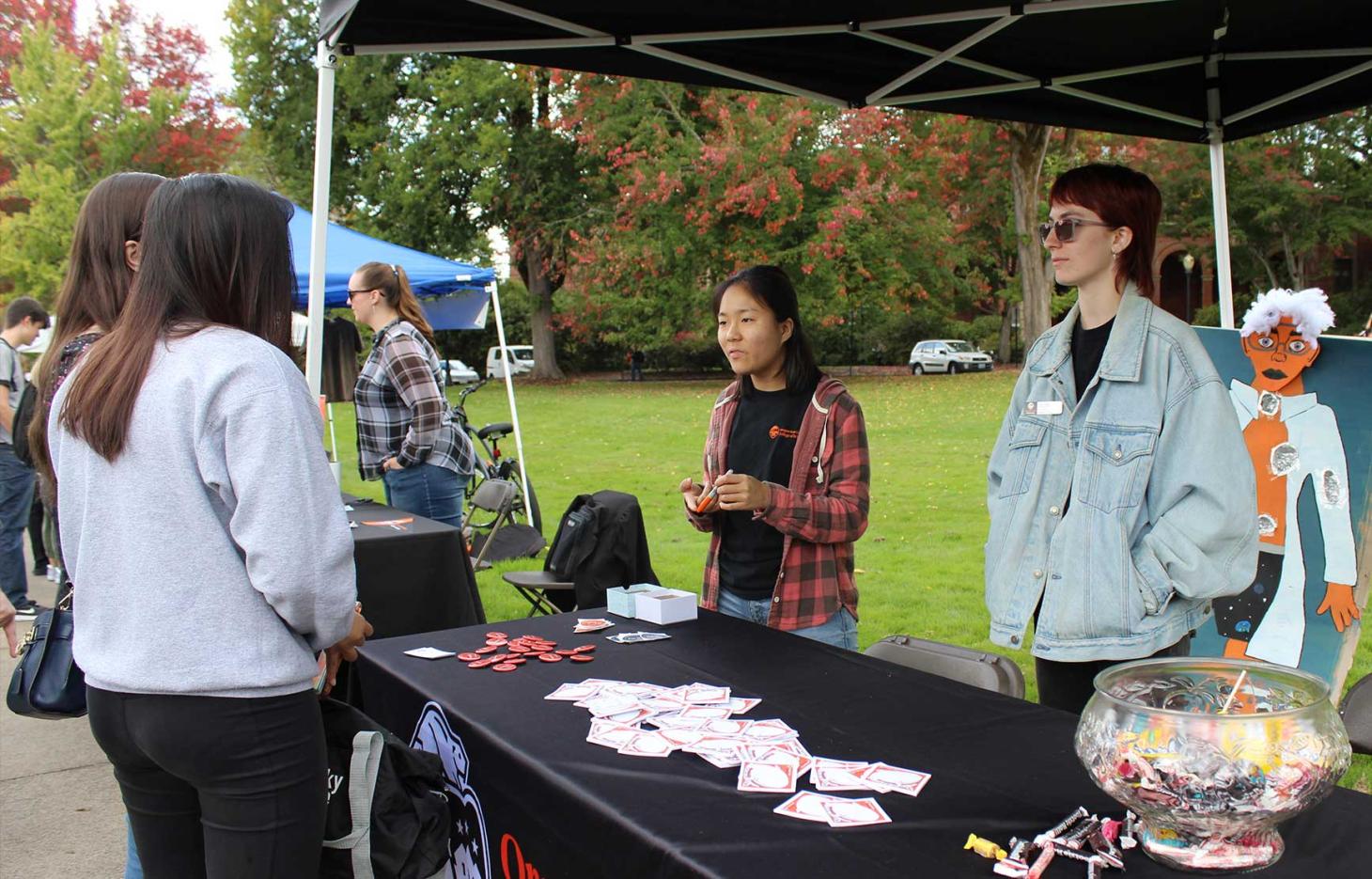How to read what follows
We set out an ambitious agenda for embedding equity, access, and inclusion in all that we do in the College of Science. Recognizing that actions must be prioritized, we indicate those actions that will be taken first with a double asterisk **. We note that we will follow an adaptive implementation strategy in executing this DAP in which our prioritized actions marked by ** may adaptively evolve in an evidence-based approach. In what follows, “unit” refers to a department, center, or research facility in the college. In addition, for these purposes, the dean’s office is also a unit.
Engagement reflects an organization’s commitment to advancing diversity, equity, access and inclusion internally and externally.
In Goal 4, we aim to innovate in research, education, outreach and engagement to create multiple pathways for success for our underrepresented community members. We will incorporate global experiences, increase access for all members to engage the community and augment and create fruitful partnerships within OSU, with external academic institutions, industry and government agencies.
The Endless Frontier: The Next 75 Years in Science recommends collaborating and sharing expertise across disciplinary boundaries, as current and future research environments require a broader set of skills than needed in the past. OSU’s strategic plan SP4.0 states that, “Our success in research, innovation, education and engagement depends on how well we value and engage the rich diversity of our entire community of internal and external stakeholders.” The actions under this goal aim to create such engagement.
Proposed actions
4.1. Establish partnerships and pipelines for minoritized communities.** The EAI Council will develop strategic ideas to establish and augment partnerships with internal and external partners to diversify our community, our research and educational portfolio and deliver public impact of our work. This includes:
- Partnering with minority serving institutions (MSIs) to better serve minority students, faculty and staff in our college. This could include research and outreach collaborations, writing grant proposals with MSIs, intellectual exchange, inviting speakers and exchange students and engaging MSI faculty and students directly by offering unique facilities and equipment capabilities to advance their (MSI) research. A database of current contacts at various MSIs will be maintained.
- Strengthening and augmenting partnerships within OSU** that the college has made with various groups on OSU campus including LSAMP, STEM Leaders, Diversity and Cultural Engagement, Center for Engagement and Leadership, EOP and TRiO to provide increased support of minoritized students, faculty and staff.
- Establishing and augmenting support for affinity groups that include alumni from minoritized communities, student-based affinity groups and student chapters such as the Society for the Advancement of Chicanos/Hispanics and Native Americans in Science (SACNAS), Association for Women in Mathematics (AWM), Women in Science (WIS), among others.
- Strengthening and augmenting partnerships with industry and government agencies** to provide increased access for our underrepresented students, faculty and staff to cutting edge research, innovation and entrepreneurial opportunities.
4.2. Enhance undergraduate and graduate education.** The EAI Council will partner with the Graduate School, the Office of Undergraduate Education and other university partners to
- Provide opportunities to strengthen core competencies and transferable skills to our students. The Graduate School’s recent Strategic Plan for Reshaping Graduate Education includes providing equitable opportunities for developing proposal writing skills, communication skills, among others.
- Recommend evidence-based innovative educational techniques to translate educational practices to undergraduate and graduate level courses. Unit EAI committees will provide recommendations to the EAI Council to promote guided autonomy for students in their units focusing on equitable educational innovation. As an example, recent research in active learning strategies indicates an increase in student performance in science, engineering and mathematics, and a narrowing of achievements gaps for underrepresented undergraduate students.
- Redesign foundational courses to address inequitable outcomes. The council with recommendations from unit EAI committees will deliberate existing foundational undergraduate and graduate courses (ones for incoming undergraduate and graduate students) and provide recommendations to update the design to remove unequal outcomes for minoritized students.
- Promote collaborative, transdisciplinary and convergence research opportunities.** The EAI Council with recommendations from unit EAI committees will design strategies to create, promote and reward collaborative and interdisciplinary research opportunities for our students that have impact on their degree programs.
4.3. Promote research, innovation and educational activities that have public impact.** The council will create opportunities for science communication events and citizen science projects, that showcase the public impact of education, research and innovation in the college. These include opportunities for outreach to K-12 to address gender equity in science, creating pipelines to K-12 to increase enrollment of students in our college from minoritized communities in Oregon.
4.4. Enhance global perspectives and experiences.** Aligning with the goals of SP4.0, the council will create and expand opportunities for students to acquire global educational experiences including international research, education, or internship experiences. The EDCC will track and report on the availability and access of such opportunities for minoritized students.




